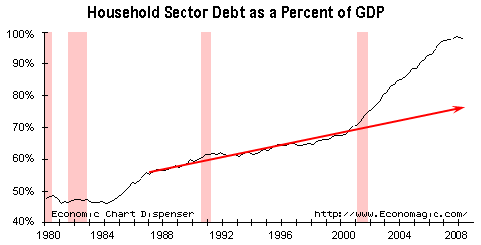INCOME vs. CONSUMPTION….In recent years, as it finally became impossible to deny that income inequality had risen to unnerving levels, conservatives began trying out a new argument: it’s not income inequality that matters, they said, it’s consumption inequality. If middle class people were buying 50% as much stuff as rich people two decades ago, and they’re buying 48% as much as rich people today — well that’s not such a big deal, is it? Middle class lifestyles, contra liberal whining, are in pretty good shape.
This has always been a fairly desperate attempt to deny an obvious problem. At the low end of the income spectrum it mostly depended on the fact that government welfare programs boost the incomes of the poor, which, though true, is something that’s happened only over many a dead conservative body. They never approved of most of these programs in the first place, but they were happy to use them as evidence that the economy was doing fine for poor people anyway.

In the middle part of the income spectrum, the consumption argument relied on — what? Well, it’s obvious: if your income is flat or down, but your consumption is rising, that means you’re borrowing. It means you’re taking out home equity loans, or maxing out your Visa card, or paying usurious rates to your local payday loan outlet. And sure enough, broad statistics show that as median incomes stagnated over the past eight years, household debt exploded. Of the increase in consumer spending we’ve seen over that period, several trillion dollars of it has been fueled solely by increased borrowing. It turns out — surprise! — that income inequality mattered after all. This debt explosion couldn’t keep up forever, which means that eventually middle class consumption was bound to plummet. And now it has.
As for what this means, Paul Krugman explains it all for you today:
The long-feared capitulation of American consumers has arrived. According to Thursday’s G.D.P. report, real consumer spending fell at an annual rate of 3.1 percent in the third quarter; real spending on durable goods (stuff like cars and TVs) fell at an annual rate of 14 percent.
To appreciate the significance of these numbers, you need to know that American consumers almost never cut spending. Consumer demand kept rising right through the 2001 recession; the last time it fell even for a single quarter was in 1991, and there hasn’t been a decline this steep since 1980, when the economy was suffering from a severe recession combined with double-digit inflation.
….It’s true that American consumers have long been living beyond their means….Sooner or later, then, consumers were going to have to pull in their belts. But the timing of the new sobriety is deeply unfortunate. One is tempted to echo St. Augustine’s plea: “Grant me chastity and continence, but not yet.” For consumers are cutting back just as the U.S. economy has fallen into a liquidity trap — a situation in which the Federal Reserve has lost its grip on the economy.
….The capitulation of the American consumer, then, is coming at a particularly bad time. But it’s no use whining. What we need is a policy response.
The ongoing efforts to bail out the financial system, even if they work, won’t do more than slightly mitigate the problem. Maybe some consumers will be able to keep their credit cards, but as we’ve seen, Americans were overextended even before banks started cutting them off.
No, what the economy needs now is something to take the place of retrenching consumers. That means a major fiscal stimulus. And this time the stimulus should take the form of actual government spending rather than rebate checks that consumers probably wouldn’t spend.
Let’s hope, then, that Congress gets to work on a package to rescue the economy as soon as the election is behind us. And let’s also hope that the lame-duck Bush administration doesn’t get in the way.

















